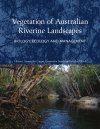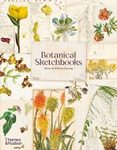About this book
Vegetation communities in Australia's riverine landscapes are ecologically, economically and culturally significant. They are also among the most threatened ecosystems on the continent and have been dramatically altered as a result of human activities and climate change. Vegetation of Australian Riverine Landscapes brings together, for the first time, the results of the substantial amount of research that has been conducted over the last few decades into the biology, ecology and management of these important plant communities in Australia.
Vegetation of Australian Riverine Landscapes is divided into four sections. The first section provides context with respect to the spatial and temporal dimensions of riverine landscapes in Australia. The second section examines key groups of riverine plants, while the third section provides an overview of riverine vegetation in five major regions of Australia, including patterns, significant threats and management. The final section explores critical issues associated with the conservation and management of riverine plants and vegetation, including water management, salinity, fire and restoration.
Vegetation of Australian Riverine Landscapes highlights the incredible diversity and dynamic nature of riverine vegetation across Australia, and will be an excellent reference for researchers, academics and environmental consultants.
Contents
1. Introduction (Samantha Capon, Michael Reid, Cassie James)
Section 1. Australia's Riverine Vegscapes in space and time
2. The physical template of Australia's rivers (Martin Thoms, Mel Parsons, Mark Southwell)
3. The physical template of Australia's floodplain landscapes (Martin Thoms, Mel Parsons)
4. A history of Australia's riverine habitats and vegetation (Sophie Bickford, Peter Gell, Michael Reid, Christine Kenyon)
Section 2. Riverine plants
5. Macroalgae, charophytes and bryophytes (Michelle Casanova, Lucy Narin)
6. Aquatic vascular macrophytes of Australian riverine systems (Steve Mackay, Cassie James)
7. Riparian herbs (Sam Capon)
8. Trees and shrubs (Sam Capon, Amy George, Cassie James)
Section 3. Riverine vegetation
9. Vegetation of coastal floodplains and wetlands in south-eastern Australia (Paul Boon, David Keith, Elisa Raulings)
10. Riverine vegetation of inland south-eastern Australia (Jane Roberts, Matthew Colloff, Tanya Doody)
11. Pattern and process in riparian vegetation of the treeless high country of Australia (Jamie Kirkpatrick)
12. Riparian vegetation of tropical northern Australia (Neil Petit, John Dowe, I H Dixon)
13. Riverine vegetation of Australia’s deserts (Sam Capon, Cassie James)
Section 4. Management concerns
14. Flow alteration and its effects on Australia's riverine vegetation (Richard Kingsford)
15. Salinisation and its impacts on Australia's riverine vegetation (George Ganf, Kaylene Morris)
16. Fire in Australia's riparian landscapes (Michael Douglas, Neil Pettit, Samantha Setterfield)
17. Grazing (Chris Jones, Peter Vesk)
18. Alien plant invasions in Australia's riparian zones (Jane Catford, Gareth Kyle)
19. Restoration (Paul Reich, Laura Williams, Tim Cavagnaro, Sam Lake)
20. Monitoring and Assessment (Nick Souter, Kasper Johansen, Michael Reid)
21. Climate change (Michael Reid, Sam Capon, Cassie James)
Index
Customer Reviews
Biography
Dr. Samantha Capon is a researcher at the Australian Rivers Institute, Griffith University. She has over 15 years’ experience researching the ecology and management of riparian, floodplain and wetland vegetation in inland Australia. Her research explores the diversity and dynamics of these ecological systems and informs their conservation and restoration.
Cassandra James is a Senior Research Scientist and Vegetation Ecologist with the Centre for Tropical Water and Aquatic Ecosystem Research at James Cook University. Her research focuses on understanding the effects of natural and man-made factors on vegetation of riverine ecosystems.
Michael Reid is a Senior Lecturer in Physical Geography at the University of New England. His research focuses on understanding pattern and process in floodplain and river ecosystems and includes floodplain vegetation dynamics, palaeoecology, food web ecology and ecohydrology.



































